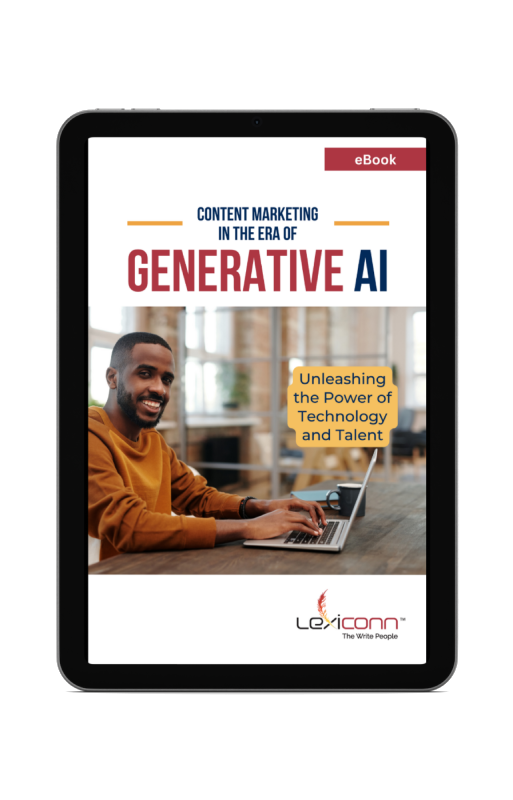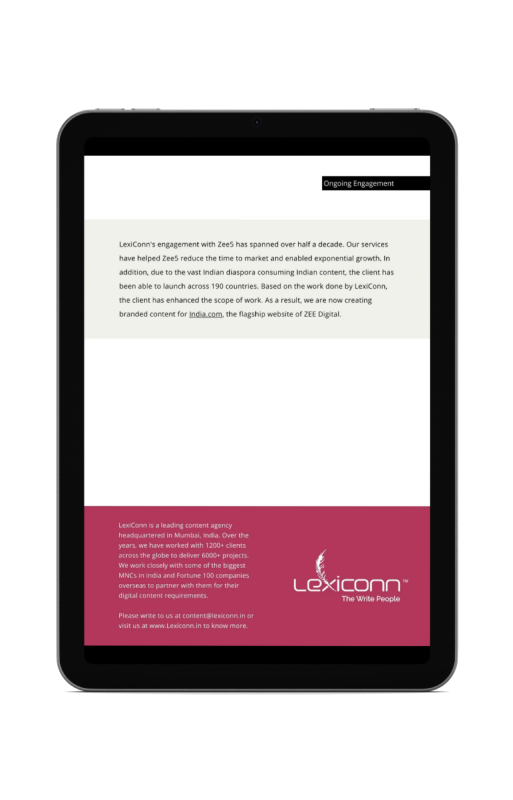
Social media has become an indispensable tool for leaders aiming to build a loyal audience. Understanding the science behind social media engagement is crucial for crafting strategies that resonate with your target audience and foster lasting relationships. This comprehensive guide delves into the intricacies of social media engagement, offering insights and best practices to help leaders enhance their social strategy and achieve sustained audience growth.
Social media engagement encompasses the interactions between users and your content across platforms like Facebook, Twitter, Instagram, LinkedIn, and others. These interactions include likes, comments, shares, retweets, mentions, and direct messages. High engagement indicates that your audience finds your content valuable, relevant, and compelling.
Engagement serves as a key metric for assessing the effectiveness of your social media strategy. It reflects how well your content resonates with your audience and influences their perceptions and actions regarding your brand. Moreover, social media algorithms often prioritize content with higher engagement, leading to increased visibility and reach.
To build a loyal audience, it's essential to understand the psychological factors that drive social media engagement. Several core principles influence how users interact with content:
Reciprocity: When you engage with your audience by responding to comments or sharing user-generated content, users feel valued and are more likely to reciprocate the engagement.
Social Proof: Content that already has likes, shares, or comments signals to others that it's valuable, encouraging further engagement.
Emotional Triggers: Content that evokes strong emotions—be it joy, surprise, or even anger—tends to be more shareable.
Community Belonging: Humans have an inherent desire to belong. Building a community where your audience feels connected can significantly boost engagement.
Curiosity Gap: Humans are naturally curious and driven to seek information when there is a gap between what they know and what they want to know. Content that teases information or poses intriguing questions can spark curiosity, compelling users to click, comment, or share to satisfy their need for closure.
Sense of Identity: People engage with content that aligns with their values, beliefs, and self-perception. When your content reinforces their identity or allows them to express who they are, they are more likely to engage and share it with others who hold similar views.
Scarcity Principle: When something is perceived as limited or exclusive, it becomes more desirable. Creating time-sensitive content, offering limited-time promotions, or granting access to exclusive groups can heighten engagement by tapping into this psychological bias.
Validation and Recognition: Social media serves as a platform for individuals to seek validation and recognition. Users are more likely to engage when their opinions are acknowledged, their contributions are valued, and they receive public recognition. This fosters a positive feedback loop, encouraging continued interaction.
Developing a robust social strategy involves several critical steps:
Define Clear Objectives: Determine what you aim to achieve with your social media efforts. Objectives may include increasing brand awareness, driving website traffic, generating leads, or fostering community engagement.
Know Your Audience: Conduct thorough research to understand your target audience's demographics, interests, and online behaviors. This insight allows you to tailor content that resonates with them.
Select the Right Platforms: Not all social media platforms are created equal. Choose platforms that align with your audience's preferences and your brand's strengths.
Develop a Content Calendar: Consistency is key in maintaining engagement. A content calendar helps plan and schedule posts, ensuring a steady stream of content.
Monitor and Adjust: Regularly analyze your social media metrics to assess performance. Be prepared to adjust your strategy based on what's working and what's not.
Establish a Unique Brand Voice and Tone: Developing a distinctive brand voice helps you stand out in the crowded social media landscape. Whether your tone is professional, friendly, witty, or authoritative, consistency across all platforms fosters familiarity and trust. Leaders should ensure their social media messaging aligns with their brand identity while remaining relatable to their audience. This creates a cohesive experience, making your content instantly recognizable.
Leverage Influencers and Industry Experts: Collaborating with relevant influencers or respected professionals in your industry can amplify your reach and enhance credibility. Influencers often have established communities built on trust, and their endorsement can introduce your brand to a broader yet targeted audience. Carefully select individuals whose values align with your brand to ensure authenticity and long-term audience growth.
Diversify Content Formats: Avoid limiting your content strategy to just text-based posts. Explore diverse formats like short-form videos (Reels, TikTok), carousels, live streams, polls, and stories. Each platform favors different content types, and experimenting allows you to understand what resonates best with your audience. Visual and interactive content often leads to better engagement and audience retention.
Incorporate Data-Driven Decisions: Successful social strategies are built on data, not guesswork. Utilize platform insights and analytics tools to track performance metrics such as click-through rates, audience demographics, and engagement patterns. Leaders should embrace data to understand what drives audience interaction, helping refine content, posting schedules, and ad campaigns for maximum impact.
Humanize Your Brand: Audiences are more likely to engage with content that feels human and relatable. Showcase the people behind your brand—share team stories, office moments, or personal anecdotes. Leaders can enhance social engagement by sharing their own thoughts on industry trends, company milestones, or leadership journeys. Humanizing your presence fosters deeper connections and builds a loyal, emotionally invested community.
Establish a Unique Brand Voice and Tone: Developing a distinctive brand voice helps you stand out in the crowded social media landscape. Whether your tone is professional, friendly, witty, or authoritative, consistency across all platforms fosters familiarity and trust. Leaders should ensure their social media messaging aligns with their brand identity while remaining relatable to their audience. This creates a cohesive experience, making your content instantly recognizable.
Content is the cornerstone of social media engagement. To captivate your audience:
Tell Stories: Narratives are powerful tools for connection. Share stories that align with your brand values and resonate with your audience's experiences.
Use Visuals: High-quality images, infographics, and videos are more engaging than text alone. Visual content is processed faster by the brain and can convey complex information succinctly.
Incorporate User-Generated Content: Sharing content created by your audience not only provides social proof but also fosters a sense of community and appreciation.
Leverage Trends: Stay updated with current trends and incorporate them into your content when appropriate. This shows your brand is timely and relevant.
Ask Questions: Encourage interaction by posing questions to your audience. This invites comments and fosters discussion.
Craft Platform-Specific Content: Every social media platform functions differently and caters to a unique user base. What works on LinkedIn might not resonate on Instagram, and a successful Twitter thread may not translate well to Facebook. Leaders should tailor their content according to platform nuances. For example, LinkedIn thrives on professional insights and industry updates, Instagram values visually aesthetic and lifestyle content, while Twitter favors concise, sharp updates or conversational threads. By customizing your content for each platform, you maximize relevance and engagement.
Humanize Your Brand: Audiences connect with people, not faceless entities. Showing the human side of your brand can drastically boost social engagement. Introduce your team, share behind-the-scenes moments, celebrate employee milestones, or post day-in-the-life content. Leaders who show vulnerability, discuss their professional journeys, or talk about challenges they’ve overcome create relatability and authenticity, fostering a deeper bond with their audience.
Provide Actionable Tips and Insights: Audiences appreciate content that equips them with practical knowledge. Sharing actionable advice—such as quick content writing hacks, social media strategy tips, or productivity techniques—positions leaders as problem-solvers. Content like “5 Steps to Improve Your LinkedIn Profile” or “How to Create Engaging Content for Social Media in 10 Minutes” not only offers value but also encourages saving, sharing, and returning for more insights.
Host Interactive Content Formats: Live videos, polls, quizzes, or “This or That” stories prompt immediate engagement. Going live for a Q&A, conducting an industry-relevant webinar, or using Instagram story polls to seek audience opinions increases real-time interaction. Interactive formats make audiences feel like collaborators rather than passive viewers, fostering a sense of involvement and co-creation.
Highlight Success Stories and Case Studies: Nothing builds credibility like showcasing success. Share client testimonials, project highlights, or case studies demonstrating how your leadership or services yielded tangible results. For LexiConn, for example, a post illustrating how their content strategy helped a brand achieve audience growth could serve as social proof. Success stories inspire, reassure, and validate your expertise—encouraging both engagement and inquiries.
Building a loyal community requires deliberate effort:
Foster Two-Way Communication: Engagement is a dialogue, not a monologue. Respond to comments, acknowledge feedback, and show appreciation for your audience's contributions.
Create Exclusive Groups: Establishing private groups or forums for your audience can foster a sense of exclusivity and belonging.
Host Events: Live events, webinars, or Q&A sessions can boost real-time engagement and strengthen community bonds.
Recognize and Reward: Highlight active community members and offer incentives for participation. This can motivate others to engage more deeply.
Maintain Consistency: Regular posting and consistent interaction signal to your audience that you're committed to the community.
Empower Brand Advocates: Identify your most engaged and loyal followers and empower them to become your brand advocates. Encourage them to share their positive experiences, create content around your brand, or even lead discussions within the community. Recognizing these advocates publicly can strengthen their connection to your brand and inspire others to participate actively.
Personalize Interactions: Go beyond generic responses—address community members by their names and tailor your replies to their specific comments or questions. When your audience feels seen and valued as individuals, they are more likely to remain engaged and develop a deeper emotional connection with your brand.
Encourage Peer-to-Peer Engagement: While your role as a leader is important, fostering peer interactions within the community is equally vital. Create opportunities for members to support, advise, or collaborate with each other. This can be done through discussion threads, community challenges, or mentorship programs, helping the community become self-sustaining over time.
Create Long-Term Engagement Campaigns: Sporadic activities may boost temporary engagement, but long-term campaigns foster sustained interest. Consider running monthly themes, community challenges, or ongoing series like “Member Spotlight” or “Friday Wins” posts. This builds anticipation and establishes a routine that keeps your community members engaged over time.
Gather Feedback and Co-Create: Involve your community in decision-making by seeking their opinions on new products, content ideas, or future initiatives. Conduct surveys or open polls, and encourage suggestions. When people see that their input shapes the community’s direction, they feel a stronger sense of ownership and loyalty toward the brand.
To gauge the effectiveness of your social media engagement efforts:
Engagement Metrics: Track likes, comments, shares, and mentions to assess how your audience is interacting with your content.
Reach and Impressions: Monitor how many people are seeing your content and how often.
Conversion Rates: Evaluate how social media engagement translates into desired actions, such as website visits, sign-ups, or purchases.
Sentiment Analysis: Analyze the tone of the interactions to understand audience perceptions of your brand.
Community Growth: Observe the growth rate of your followers or group members to ensure your audience is expanding.
Mastering the science of social media engagement is not merely a matter of increasing likes or shares—it is about cultivating lasting relationships and fostering a community that genuinely values your leadership and brand. Audience building is a journey that demands consistency, authenticity, and an understanding of human behavior. Leaders who approach social media with a thoughtful social strategy will find themselves not only growing their follower count but also nurturing a community that listens, trusts, and advocates for their brand.
The key to unlocking social engagement lies in creating content that resonates deeply. Whether it’s through emotionally charged narratives, visual storytelling, or interactive experiences, the goal is to make your audience feel seen and heard. Leaders must shift their mindset from broadcasting messages to initiating conversations—because social media thrives on two-way interactions. Engagement is not built overnight, but every thoughtful response, every personalized comment, and every piece of valuable content plants a seed for future loyalty.
Moreover, community building should always be at the heart of your approach. A loyal community not only amplifies your content but also becomes your brand’s strongest advocate. When members feel a sense of belonging and contribution, they become emotionally invested in your success. By fostering trust, acknowledging their voices, and consistently delivering value, you transform your audience into partners in your growth journey.
Ultimately, sustainable audience growth stems from leading with empathy, adapting based on insights, and always striving to offer content that inspires, informs, and engages.
Book a FREE 30-minute website audit consultation today. Visit www.lexiconn.in or email [email protected] to get started.



I have read and accept the Privacy Policy
Read More